In the last post I showed a couple of the trident maples I’m currently digging and pruning.
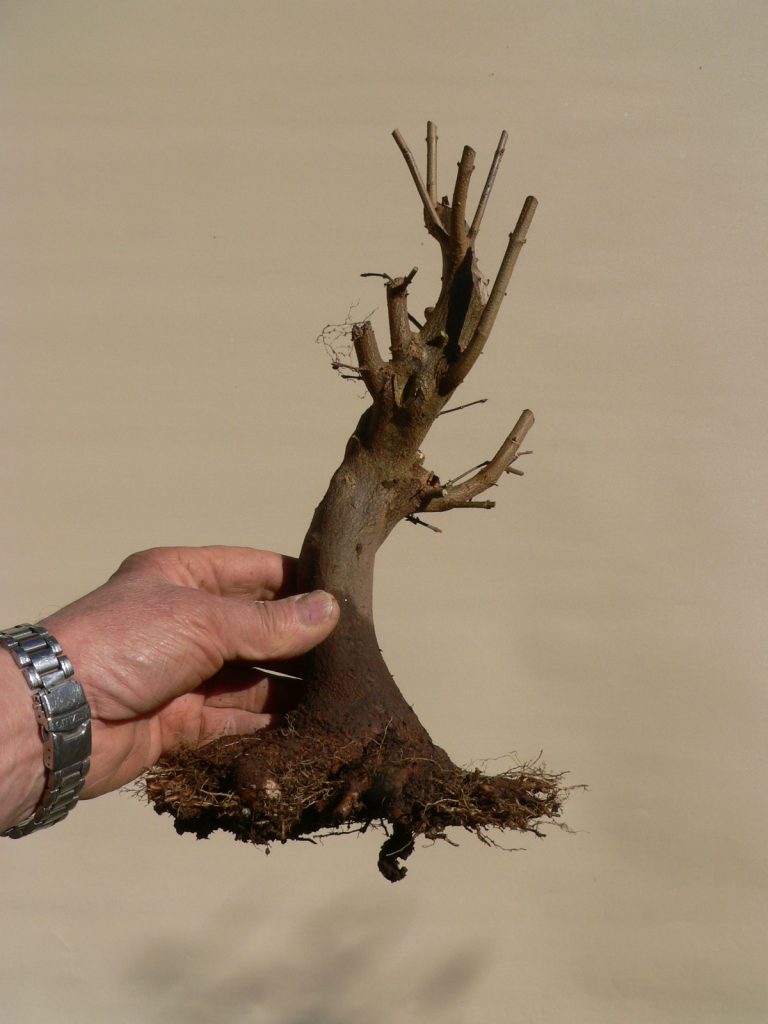
You may have noticed the very horizontal root spread.
These tridents have been developed using the ‘plate’ method.
Start with a piece of metal sheet with a hole drilled through the middle.
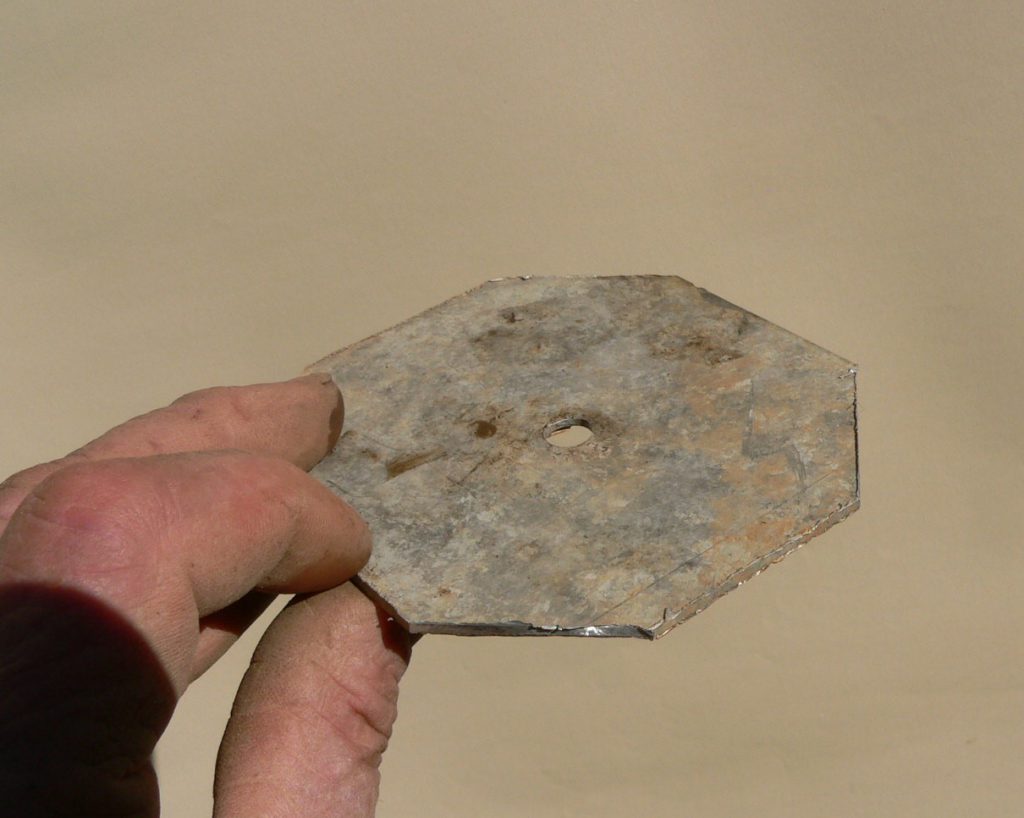
Mine have been cut from old aluminium roadsigns I bought at the scrap metal yard but any sheet metal will do. Some growers use wall or floor tiles but they can be difficult to drill and I found that growing trident roots exert enormous pressure and broke the tiles. CDs are also crushed by growing roots but I’ve used these pieces over and over for nearly 10 years now with excellent results.
I start with seedlings. Thread a seedling through the hole.
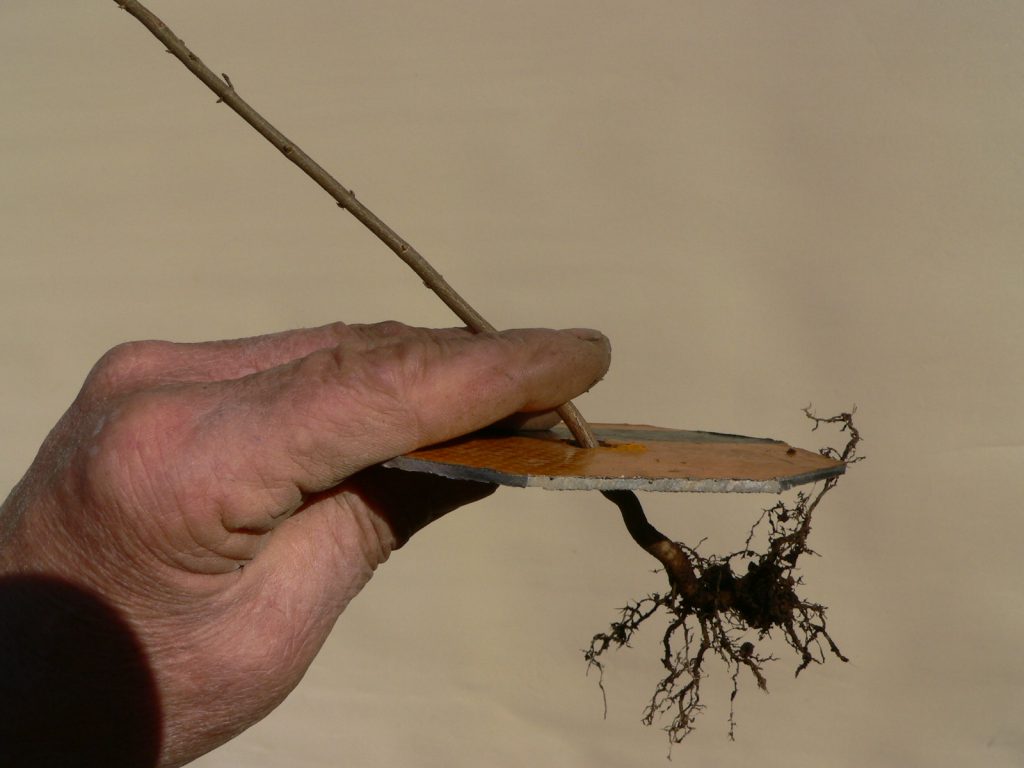
Don’t go too far through. if any roots are above the metal one usually grows far quicker and gives an unbalanced root structure.
Note that I’ve placed the trunk on an angle through the sheet. If you want a vertical trunk stand yours upright but make the choice now because next year it will be too late to make changes.
Plant the tree with its metal collar about 1cm under the soil. Too deep an you’re likely to get more roots than you need and they may not be evenly spread.
As the trunks grow fatter the metal starts to cut off circulation in the tree. The tree responds by producing callus and then new roots just above the restricted area. The only option for those new roots is to grow out over the metal in a flat plane. Eventually circulation to the roots under the metal is completely cut off and those roots will die off leaving your tree with a new, flat root system.
I find it far better to keep these trees in pots in the nursery for the first year. In the ground, new roots are forming just as the heat of summer hits and if they don’t make it over the plate and down into deeper soil there is a risk that they may dry out on hot days. Daily watering ensures they will grow and survive until, after a year, the tree looks something like this
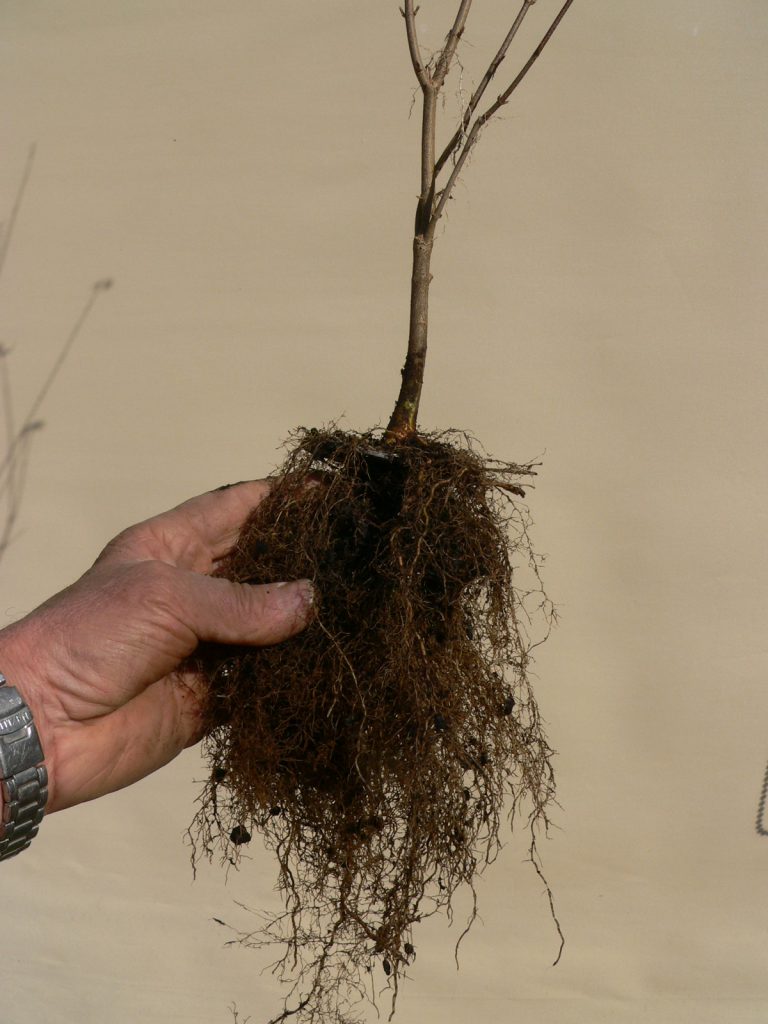
Here’s a closer shot of the new roots above the metal plate.
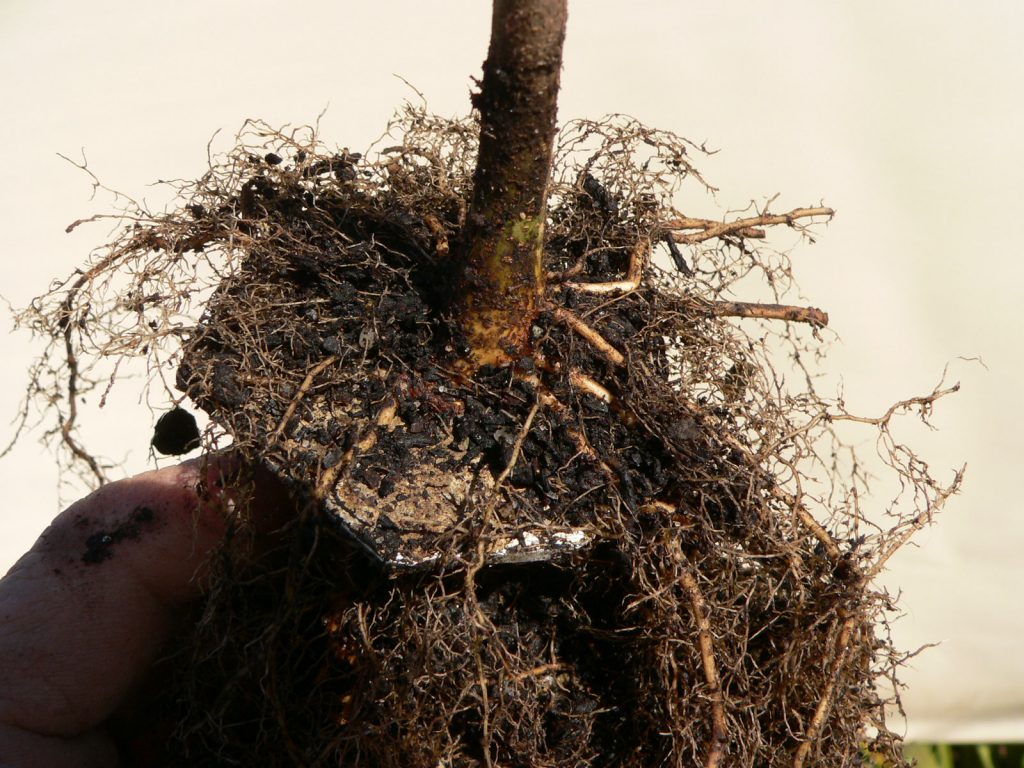
Now those new roots above the metal are pruned quite short.
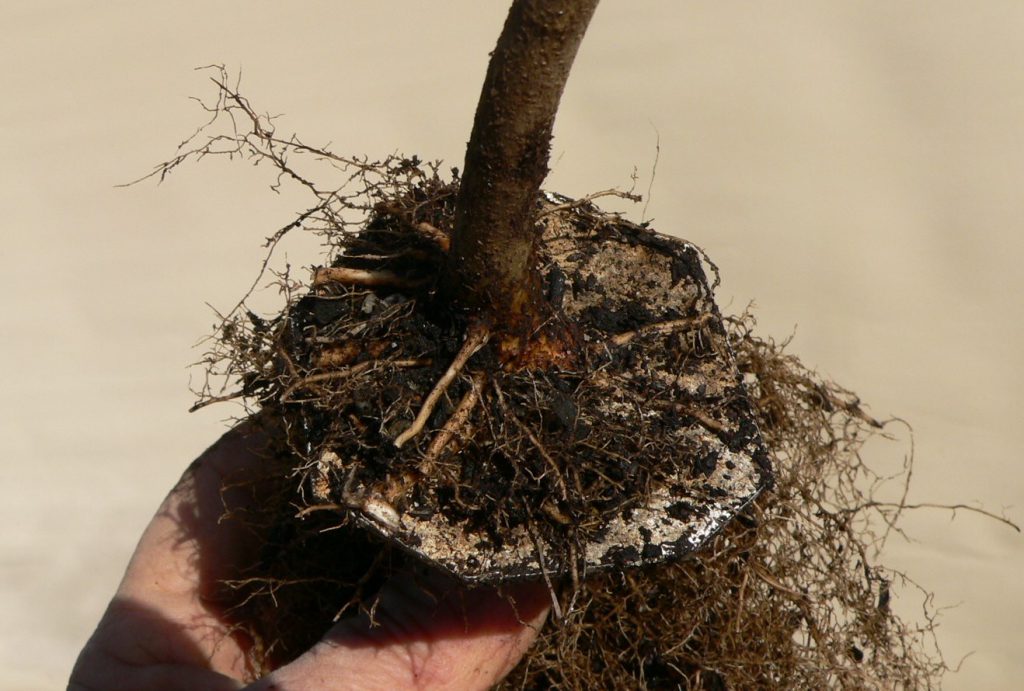
Then the tree can be planted back into a grow pot or into the ground to thicken up. remember not to plant too deep. Tridents love to grow new roots right near the surface so if these roots are buried deep the tree will grow new ones that may not be as good.
Another year of growth and I now have a thickened trident with developing horizontal nebari. A side benefit is that the base of the trunks tends to swell and buttress far more than with other techniques. You can see that there’s no real advantage in using larger plates. To get good root ramification the roots need to be pruned quite short each year and larger sheets just make it harder for the new roots to reach moisture deeper in the soil.
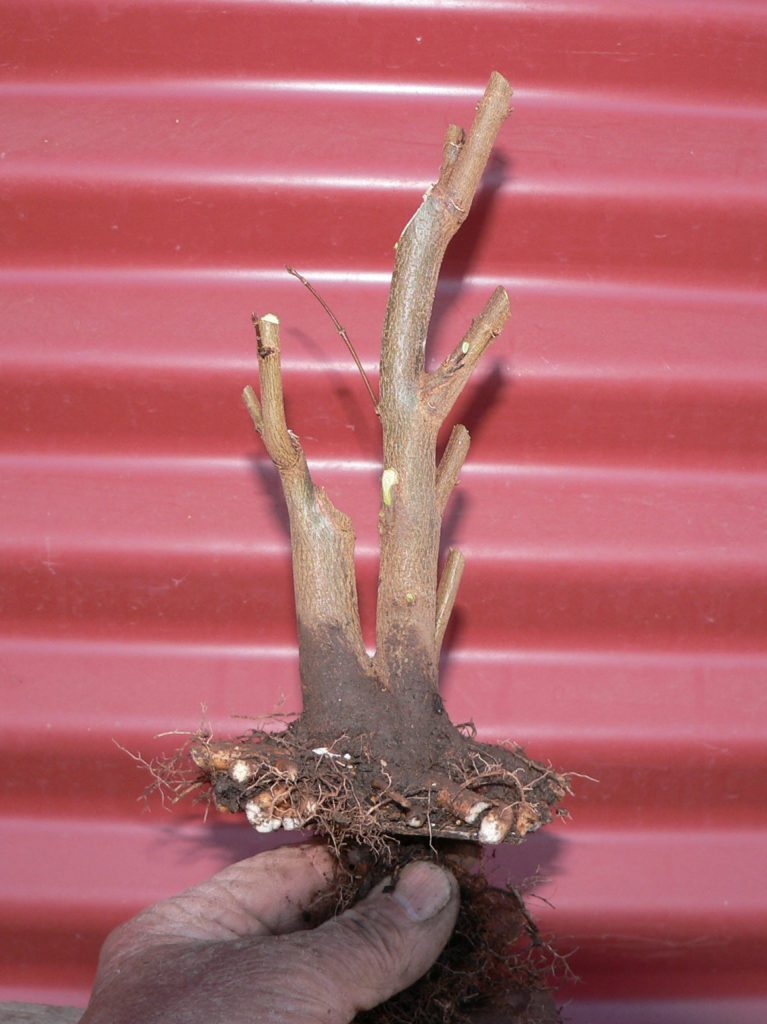
Another year or 2 and I have the sort of tree shown at the start of this post.
I find that threading trident seedlings is an easy way to produce superior root spread on trident maples but I have also used the same technique on Japanese maples and even on Japanese black pines. It should work with most tree species and I’d be interested to hear from growers who have used it on other trees.
